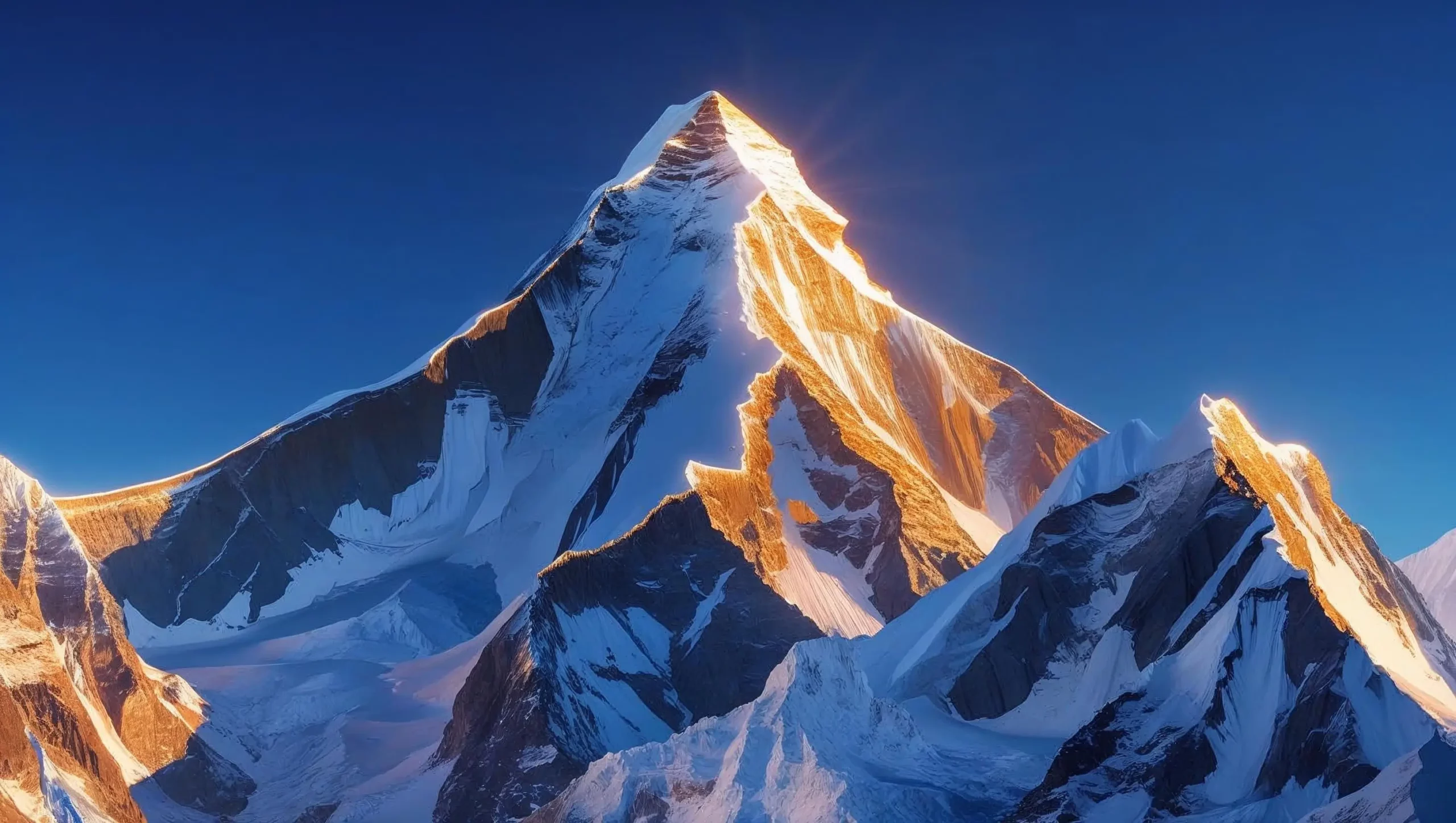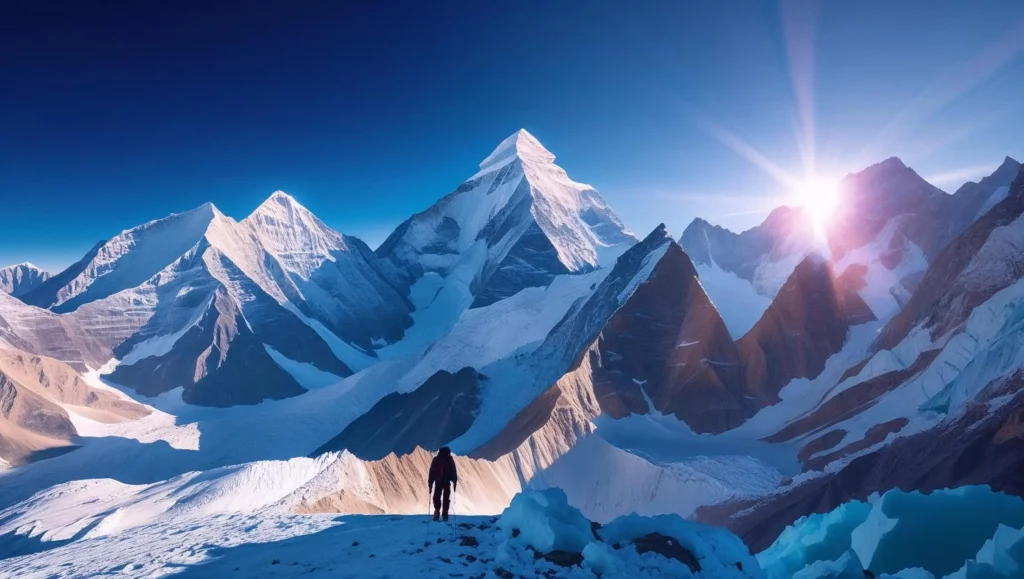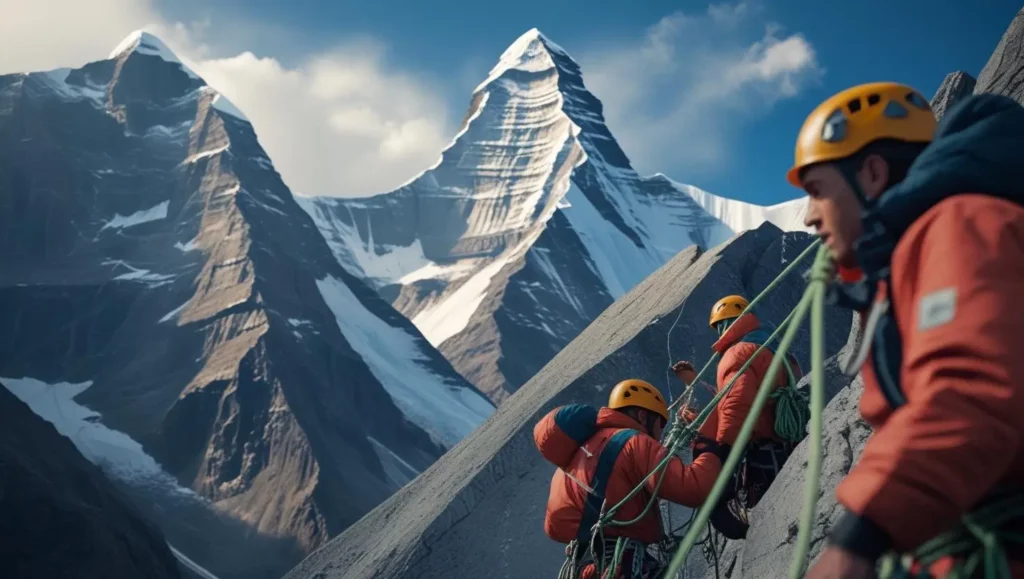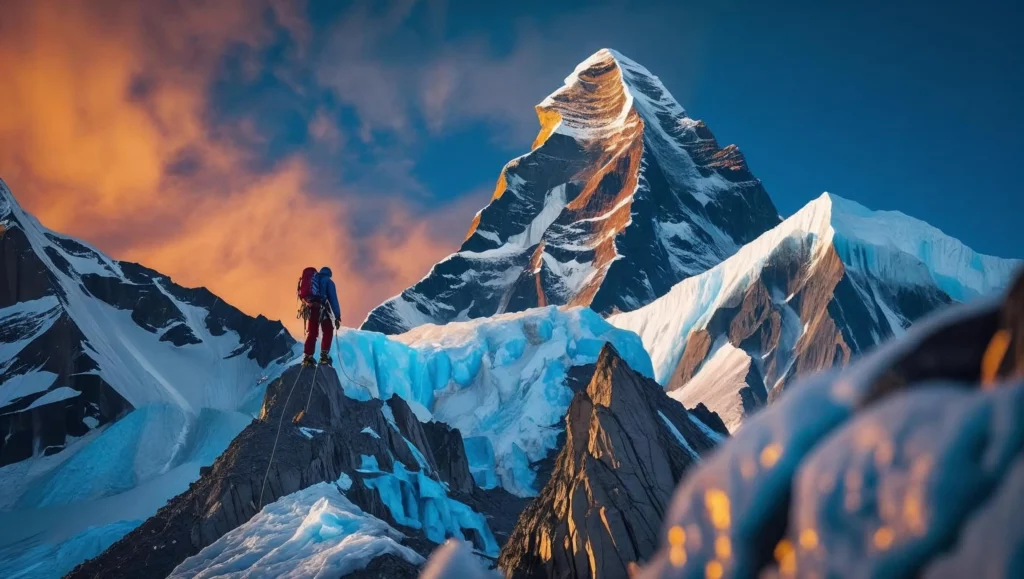Conquering Lobuche East: Your Ultimate Guide to an Unforgettable Trek in the Himalayas
Nestled in the heart of the majestic Himalayas, Lobuche East beckons adventurous souls with its breathtaking vistas and exhilarating challenges. This ultimate guide to conquering Lobuche East will equip you with everything you need for an unforgettable trek. From navigating rocky trails to high-altitude camping, you’ll discover the secrets of this remarkable journey. Picture the sunrise illuminating towering peaks, the crisp mountain air invigorating your spirit, and the camaraderie of fellow trekkers enhancing every shared moment. Whether you’re a seasoned mountaineer or a passionate trekker seeking new horizons, Lobuche East promises an experience that transcends the ordinary. Join us as we explore the routes, prepare for altitude challenges, and unveil tips for capturing the awe-inspiring beauty that awaits. Lace up your boots, grab your gear, and get ready to embark on a journey that will leave you breathless – in more ways than one. Your adventure in the Himalayas starts here!

Table of contents
Why Choose Lobuche East for Your Trek?
Preparing for Your Climb: Essential Gear and Equipment
The Best Time to Trek Lobuche East
Trekking Itinerary: What to Expect Day by Day
Navigating the Route: Key Landmarks and Highlights
Acclimatization Tips for High-Altitude Trekking
Safety Considerations and Risk Management
Why Choose Lobuche East for Your Trek?
Lobuche East stands out as one of the most captivating trekking peaks in the Himalayas, drawing adventurers from around the globe. The allure of Lobuche East lies not only in its challenging yet accessible climb but also in its panoramic views that encompass some of the world’s highest peaks, including Everest, Lhotse, and Nuptse. The trek to Lobuche East offers a blend of cultural richness and natural splendor, providing trekkers with a comprehensive Himalayan experience. The journey takes you through the iconic Khumbu Valley, home to the legendary Sherpa people, whose resilience and hospitality are as awe-inspiring as the towering mountains themselves.
One of the primary reasons to choose Lobuche East is its relative accessibility compared to other Himalayan peaks. While it presents a formidable challenge, it does not require the extreme technical skills needed for higher peaks like Everest or Ama Dablam. This makes Lobuche East an ideal choice for trekkers looking to push their limits without venturing into the realm of extreme mountaineering. The climb involves a mix of trekking and basic climbing, giving adventurers a taste of mountaineering without the need for extensive experience or specialized equipment.
Moreover, the trek to Lobuche East is a journey through some of the most picturesque landscapes in the world. From the bustling streets of Kathmandu to the serene trails winding through rhododendron forests, glacial rivers, and high-altitude meadows, each step offers a new vista to marvel at. The route also includes iconic stops such as Namche Bazaar, Tengboche Monastery, and the Everest Base Camp trail, enriching the trekking experience with cultural and historical significance. Choosing Lobuche East for your trek means embracing the spirit of adventure while immersing yourself in the unparalleled beauty of the Himalayas.

Preparing for Your Climb: Essential Gear and Equipment
Embarking on a trek to Lobuche East requires meticulous preparation and the right gear to ensure both safety and enjoyment. The first step in preparation is to invest in high-quality trekking boots that provide ample ankle support and are well broken-in. The rugged terrain of the Himalayas demands footwear that can handle rocky paths, icy patches, and steep ascents without compromising comfort. Additionally, a sturdy pair of crampons is essential for navigating the icy sections of the climb, particularly as you approach the summit.
Layering is crucial to managing the varying temperatures you’ll encounter on your trek. Pack moisture-wicking base layers, insulating mid-layers such as fleece or down jackets, and a waterproof and windproof outer shell. The weather in the Himalayas can be unpredictable, with temperatures dropping significantly at higher altitudes. Gloves, thermal socks, and a warm hat are also essential to protect extremities from the cold. Don’t forget to bring a good quality sleeping bag rated for sub-zero temperatures, as nights in high-altitude camps can be extremely chilly.
Your gear list should also include trekking poles for stability, a headlamp with extra batteries for early morning starts or late finishes, and a reliable backpack to carry your essentials. Hydration is key at high altitudes, so bring a hydration system like a CamelBak or water bottles with a purification method. Snacks such as energy bars, nuts, and dried fruit will help maintain your energy levels during long trekking days. Finally, a comprehensive first aid kit, including altitude sickness medication, blister treatment, and basic medical supplies, is indispensable for addressing any health issues that might arise during the trek.
The Best Time to Trek Lobuche East
Timing is critical when planning your trek to Lobuche East, as the weather conditions significantly impact the trekking experience. The best time to embark on this adventure is during the pre-monsoon (spring) and post-monsoon (autumn) seasons. Each of these periods offers distinct advantages and enhances the overall experience of trekking in the Himalayas.
Spring, from March to May, is one of the most popular times to trek Lobuche East. During this season, the weather is relatively stable, with clear skies and moderate temperatures that are ideal for trekking. The trails are adorned with blooming rhododendrons and other wildflowers, adding vibrant colors to the already stunning landscapes. Spring also provides excellent visibility of the surrounding peaks, making it a perfect time for photography and enjoying the panoramic views. This season does see a higher number of trekkers, creating a lively and social atmosphere on the trails.
Autumn, from September to November, is another excellent season for trekking Lobuche East. Post-monsoon, the skies clear up, offering crisp, unobstructed views of the mountains. The temperatures are cool but manageable, and the trails are less crowded compared to spring. The autumn months are known for their stable weather patterns, reducing the likelihood of sudden weather changes that can disrupt the trek. Additionally, the autumn season coincides with several local festivals, providing trekkers with the opportunity to immerse themselves in the rich cultural traditions of the region.
While spring and autumn are the optimal times for trekking, it is possible to trek Lobuche East during the winter (December to February) and monsoon (June to August) seasons, although these come with significant challenges. Winter treks require additional preparation for extreme cold and shorter daylight hours, while monsoon treks involve dealing with heavy rainfall, slippery trails, and the increased risk of landslides. For those seeking the best combination of favorable weather, stunning scenery, and cultural engagement, spring and autumn remain the preferred choices.

Trekking Itinerary: What to Expect Day by Day
A well-planned itinerary is essential for a successful trek to Lobuche East, allowing you to acclimatize properly and enjoy the journey to the fullest. Here’s a detailed day-by-day breakdown of what you can expect on this unforgettable adventure.
Day 1: Arrival in Kathmandu
Your adventure begins with your arrival in Kathmandu, the vibrant capital of Nepal. After settling into your hotel, take some time to explore the bustling streets of Thamel, visit historical sites such as Swayambhunath (the Monkey Temple), and prepare for the trek ahead with a final gear check.
Day 2: Fly to Lukla and Trek to Phakding
An early morning flight takes you from Kathmandu to Lukla, a thrilling experience in itself with stunning aerial views of the Himalayas. From Lukla, you’ll start your trek, descending through lush forests and crossing suspension bridges over the Dudh Koshi River to reach Phakding.
Day 3: Trek to Namche Bazaar
Today’s trek involves a challenging climb to Namche Bazaar, the gateway to the Everest region. The trail winds through pine forests and crosses several suspension bridges, culminating in a steep ascent to Namche Bazaar. Along the way, you’ll catch your first glimpses of Everest and other towering peaks.
Day 4: Acclimatization Day in Namche Bazaar
Acclimatization is crucial at this stage, so you’ll spend a day in Namche Bazaar. Take a short hike to the Everest View Hotel for panoramic views of Everest, Lhotse, and Ama Dablam. Explore the vibrant markets of Namche and visit the Sherpa Museum to learn about the local culture and mountaineering history.
Day 5: Trek to Tengboche
Leaving Namche, the trail continues through lush forests and offers spectacular views of Everest, Nuptse, and Lhotse. The day’s highlight is reaching Tengboche, home to the famous Tengboche Monastery. Attend the evening prayers at the monastery and soak in the serene atmosphere.
Day 6: Trek to Dingboche
The trek to Dingboche takes you through rhododendron forests, across the Imja Khola, and past picturesque villages. As you gain altitude, the landscape becomes more rugged Why Choose Lobuche East for Your Trek?
Lobuche East, standing tall at
6,119 meters, is one of the most fascinating trekking peaks in the Everest region. Its unique location offers an unparalleled vantage point of the surrounding Himalayan giants, including Everest, Lhotse, Nuptse, and Makalu. Trekkers are drawn to Lobuche East not only for its panoramic vistas but also for the diverse trekking experiences it offers—from traversing lush valleys to navigating glacial paths. This trek is a perfect blend of adventure and natural beauty, making it a must-visit destination for those seeking to challenge themselves while indulging in the serene magnificence of the world’s highest mountain range.
One of the main reasons to choose Lobuche East over other trekking destinations is its accessibility combined with the thrill of a high-altitude ascent. Unlike some of the more remote peaks, Lobuche East can be reached relatively easily from the bustling town of Lukla, which is just a short flight from Kathmandu. This accessibility makes it a popular choice for trekkers who have limited time but still want to experience the grandeur of the Himalayas. Moreover, the trek offers a well-maintained route with ample facilities, ensuring that even those new to high-altitude trekking can embark on this adventure with confidence.
Additionally, Lobuche East provides an excellent opportunity to immerse oneself in the rich culture and history of the Khumbu region. The route passes through several Sherpa villages, where trekkers can experience the warm hospitality and unique traditions of the local communities. The trek also includes visits to iconic landmarks such as the Tengboche Monastery, which is one of the most significant religious sites in the area. This cultural immersion, combined with the physical challenge and natural beauty, makes Lobuche East an unforgettable trekking destination.
Navigating the Route: Key Landmarks and Highlights
The trek to Lobuche East is dotted with numerous landmarks and highlights that make the journey even more special. Each day brings new sights and experiences, adding to the overall richness of the trek.
One of the first major landmarks you’ll encounter is Namche Bazaar, a bustling town nestled in the heart of the Khumbu region. Known as the gateway to Everest, Namche Bazaar offers a vibrant mix of shops, cafes, and markets. It’s a great place to acclimatize, interact with fellow trekkers, and soak in the unique culture of the Sherpa people. The nearby Everest View Hotel provides stunning panoramic views of Everest, Lhotse, and Ama Dablam, making it a popular acclimatization hike.
As you continue your trek, the Tengboche Monastery stands out as a significant spiritual landmark. Situated at an altitude of 3,867 meters, this monastery is one of the most important religious sites in the region. The serene atmosphere and the backdrop of towering peaks create a truly awe-inspiring setting. The monastery holds daily prayers, and witnessing a prayer session can be a deeply moving experience.
Further along the trek, the village of Dingboche offers another acclimatization point with stunning views of the surrounding peaks. The trek from Dingboche to Lobuche takes you through the dramatic Khumbu Glacier, a significant highlight of the journey. This glacial landscape, with its icy blue crevasses and towering seracs, provides a stark contrast to the lush valleys below and adds an element of adventure to the trek. Each of these landmarks and highlights contributes to the overall magic and allure of the Lobuche East trek.
Acclimatization Tips for High-Altitude Trekking
Acclimatization is crucial for a successful and safe trek to Lobuche East. Proper acclimatization allows your body to adjust to the lower oxygen levels at high altitudes, reducing the risk of altitude sickness. Here are some essential tips to help you acclimatize effectively:
Firstly, it’s important to follow the principle of “climb high, sleep low.” This means that while you can trek to higher altitudes during the day, you should always sleep at a lower altitude to allow your body to recover. This approach helps your body gradually adjust to the changing altitude without overwhelming it. Incorporate acclimatization days into your itinerary, where you spend an extra day at the same altitude to give your body time to adapt.
Staying hydrated is another key aspect of acclimatization. Drink plenty of water throughout the day to keep your body well-hydrated. Avoid alcohol and caffeine, as they can contribute to dehydration. Additionally, eating a balanced diet with plenty of carbohydrates can help maintain your energy levels and support acclimatization. Carry snacks such as energy bars, dried fruits, and nuts to keep your energy up during the trek.
Finally, listen to your body and don’t push yourself too hard. If you experience symptoms of altitude sickness, such as headaches, nausea, dizziness, or shortness of breath, it’s important to descend to a lower altitude and seek medical attention if necessary. Taking the time to acclimatize properly will enhance your trekking experience and ensure your safety throughout the journey.
Safety Considerations and Risk Management
Safety is paramount when trekking to high-altitude destinations like Lobuche East. Being prepared and knowing what to do in case of an emergency can make all the difference. Here are some important safety considerations and emergency protocols to keep in mind:
Firstly, it’s essential to have a comprehensive understanding of the symptoms of altitude sickness and how to respond. Acute Mountain Sickness (AMS), High Altitude Pulmonary Edema (HAPE), and High Altitude Cerebral Edema (HACE) are serious conditions that can occur at high altitudes. Symptoms of AMS include headaches, nausea, dizziness, and fatigue. If you experience these symptoms, it’s important to rest, stay hydrated, and avoid ascending further. If symptoms worsen, descend to a lower altitude immediately.
In case of severe symptoms, such as confusion, difficulty walking, or shortness of breath, it’s crucial to descend immediately and seek medical help. Carrying a portable altitude chamber and oxygen canisters can be life-saving in emergency situations. Make sure you and your trekking group are familiar with the use of these devices. Additionally, having a satellite phone or a reliable communication device can help you stay connected and call for assistance if needed.
Lastly, ensure you have comprehensive travel insurance that covers high-altitude trekking and emergency evacuation. In the event of a serious medical emergency, helicopter evacuation may be necessary, and having the right insurance coverage can provide peace of mind and financial protection. Always trek with a reputable trekking agency that has experienced guides trained in first aid and emergency response. Prioritizing safety and being prepared for emergencies will help you enjoy a successful and safe trek to Lobuche East.

Cultural Insights: Engaging with Local Communities
One of the most enriching aspects of trekking to Lobuche East is the opportunity to engage with the local communities and immerse yourself in the culture of the Khumbu region. The Sherpa people, renowned for their mountaineering skills and warm hospitality, are the heart and soul of this region. Interacting with them provides valuable insights into their way of life, traditions, and beliefs.
During your trek, you’ll pass through several Sherpa villages where you can experience the local culture firsthand. Namche Bazaar, in particular, is a vibrant hub where you can visit the Sherpa Culture Museum to learn about the history and traditions of the Sherpa people. The weekly market is a bustling event where locals and trekkers come together to trade goods, providing a unique glimpse into the daily life of the community.
Visiting the Tengboche Monastery offers a deeper understanding of the spiritual beliefs that are integral to the Sherpa culture. The monastery is a center of Buddhist worship and a place of great significance for the local people. Participating in a prayer session or simply observing the rituals can be a profound experience. Additionally, many teahouses along the trekking route are family-run, offering a warm and welcoming atmosphere. Engaging with the locals, learning a few basic phrases in Nepali, and showing respect for their customs will enhance your trekking experience and create lasting memories.

Conclusion: Making the Most of Your Lobuche East Adventure
Embarking on a journey to Island Peak offers a unique opportunity to immerse yourself in the rich culture of the Khumbu region. The Sherpa community, known for their mountaineering prowess and warm hospitality, plays a central role in the cultural experience. As you trek through Sherpa villages, you’ll have the chance to visit ancient monasteries, observe traditional rituals, and interact with locals. Learning about the Sherpa way of life, their spiritual beliefs, and their deep connection to the mountains adds a profound dimension to your adventure. Engaging respectfully with the local culture, including learning a few basic phrases in the Sherpa language, can enhance your experience and foster meaningful connections.
Environmental considerations are equally important when climbing in the Himalayas. The fragile ecosystems of the high mountains are particularly vulnerable to the impacts of human activity. Practicing Leave No Trace principles is essential to minimize your environmental footprint. This includes packing out all trash, avoiding the use of single-use plastics, and being mindful of your water usage. Using biodegradable soap and ensuring that all waste is properly disposed of helps preserve the pristine environment for future generations.
Supporting local conservation efforts and initiatives can also make a positive impact. Many organizations in the Khumbu region work towards protecting the environment and promoting sustainable tourism practices. Contributing to these efforts, whether through donations or volunteer work, can help ensure the long-term preservation of the region’s natural beauty. Additionally, choosing eco-friendly trekking and climbing operators who prioritize sustainability and responsible tourism practices can further support these goals. By being mindful of the cultural and environmental aspects of your journey, you not only enrich your own experience but also contribute to the well-being of the local community and the preservation of the majestic Himalayas.
